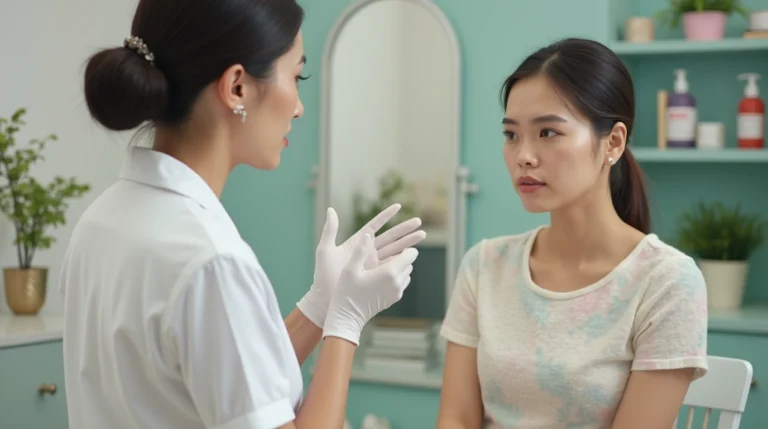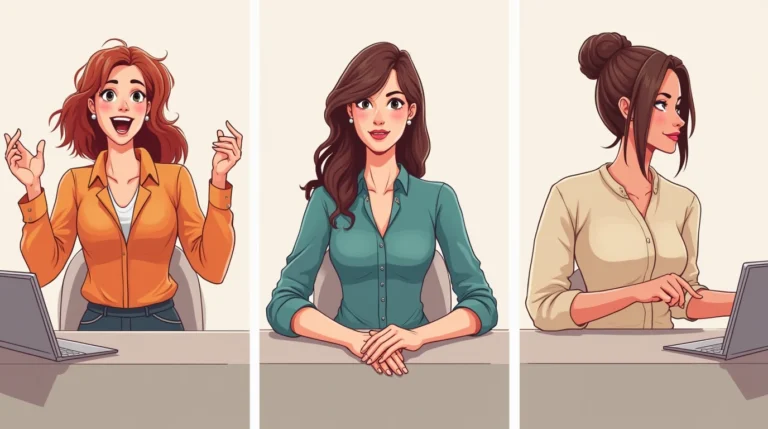🤝 First Impressions and Beginning Communication with the Client
For a nail service specialist working individually with clients, it is important to remember that every person has two strong feelings — pride and self-esteem. These traits must be taken into account during the first meeting and communication. It is crucial from the very beginning to show your positive attitude towards the client’s strengths. 💖
🔍 How Does Interaction Begin?
Of course, it all starts with the first glance:
-
observing the client’s appearance,
-
their voice,
-
mannerisms.
☝️ Effective communication is impossible without mutual understanding and accurate perception of your partner.
The first 20–60 seconds are decisive! It is during this short period that the client forms their first impression of you, which will remain in their memory for a long time.
🎯 What Influences the First Impression?
Appearance
-
Clothing
-
Hairstyle
-
Accessories
-
Glasses
-
Signs of distinction (e.g., badge or uniform)
Mannerisms
-
How a person stands, sits, moves
-
Direction of their gaze
-
How they speak and behave in the space
🧩 All of this forms a visual and behavioral image of the person, their status, and their belonging to a certain social group.
👗 Why Is Clothing Important?
In today’s world, there are no strict rules about who can wear what. However, clothing still plays a huge role in perception. The right outfit:
-
helps create a pleasant impression;
-
inspires trust;
-
emphasizes your professionalism.
🧥 Real-life example:
If a student goes to an exam in a formal suit — they want to “raise” their status.
A professor in jeans and a sweater, on the contrary, tries to reduce distance and create a warmer atmosphere.
The same applies in the nail industry — your image can set the client up for trust, comfort, and sympathy.
👗 What Clothing and Behavior Signal High Status?
When we meet a person for the first time, our perception often builds on appearance — and this is not only about clothes but also about behavior and mannerisms. Let’s analyze what details reveal a person’s aspiration to status and what might “lower” them in the eyes of others.
💰 1. Price and Quality of Clothing
The more expensive and higher-quality the clothing — the higher its status. But keep in mind:
-
Rare (limited) models or fashion novelties also increase value;
-
Outdated or too casual clothes can create a sense of “low” status.
📐 2. Clothing Silhouette
High-status silhouettes — elongated rectangles with sharp angles (e.g., a formal jacket or coat).
Low-status silhouettes — rounded, soft, spherical shapes (e.g., fluffy sweaters, baggy jeans, cozy cardigans).
🔸 Conclusion: Office and structured clothing looks more respectable than soft and “cozy” attire.
🎨 3. Clothing Color
In Europe and Russia, high-status colors are achromatic: white, black, gray.
The brighter and more saturated the color, the lower the perceived status.
❗️ Note: Color perception varies by culture. In some countries, bright colors are a symbol of wealth.
💍 4. Accessories and Jewelry
Gold and diamond jewelry indicate financial means, but…
Excessively flashy jewelry can be seen as a sign of dominance or sometimes insincerity or showing superiority.
🧍♀️ 5. Mannerisms
Your posture, gait, how you sit and stand — all speak about your status.
💺 What people like:
Sitting comfortably, slightly leaning forward — openness, readiness for dialogue.
🚫 What repels:
Sitting with a straight back leaning backward — may seem arrogant.
Crossing arms or legs — creates a barrier in communication.
🧠 How We Are Perceived: Mistakes and Perception Features
In nail services, how a client perceives the technician is very important. Sometimes impressions are formed not only by words and appearance but also by subconscious reactions. Let’s explore common perception distortions in communication — and how to handle them. 👇
🌟 Halo Effect
When the first information about a person influences the perception of all their other qualities.
🔹 Example: if a person looks confident and well-groomed, we tend to think they are kind, smart, and professional.
🔹 Danger: we tend to underestimate negative traits or fail to notice good qualities if the first impression was negative.
💡 Advice: Try to make a positive first impression — it will “illuminate” everything else. Also, don’t blindly trust your first impression of others.
🔍 Projection Effect
When we attribute our own qualities to another person — good or bad.
😊 If we like the person, we think they are similar to us and attribute our positives to them.
😒 If we dislike them, we attribute our negatives.
💡 Advice: Don’t judge a person based on yourself. Everyone has their own experience, character, and motivation.
🆕 Recency and Primacy Effect
📌 If a person is unfamiliar, we trust the first information about them more.
📌 If a person is familiar, recent events and actions influence opinion more.
💡 Advice: Monitor your behavior not only at the beginning but throughout the interaction — a client can change their opinion for better or worse.
🪞 What This Means for the Technician
✔ First impression is your gold. Try to make it consciously: appearance, voice, friendly smile 😊
✔ Client’s attitude toward you can depend on their own mood and beliefs, not facts. That’s normal.
✔ Learn to recognize and “double-check” your assessments, especially if they are very positive or negative.
✔ Even if the first impression was poor, it can be gradually corrected through friendly and professional attitude.




